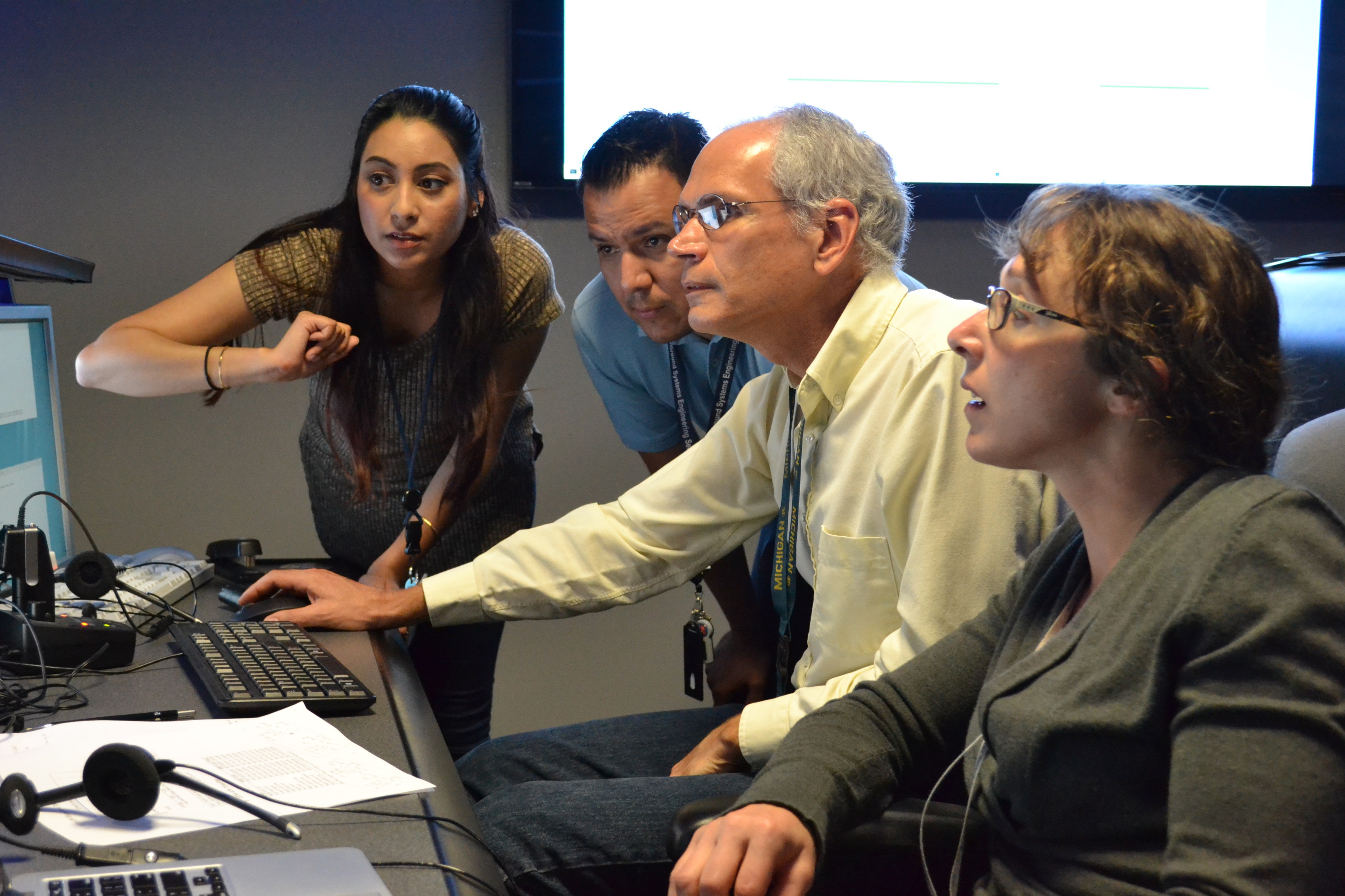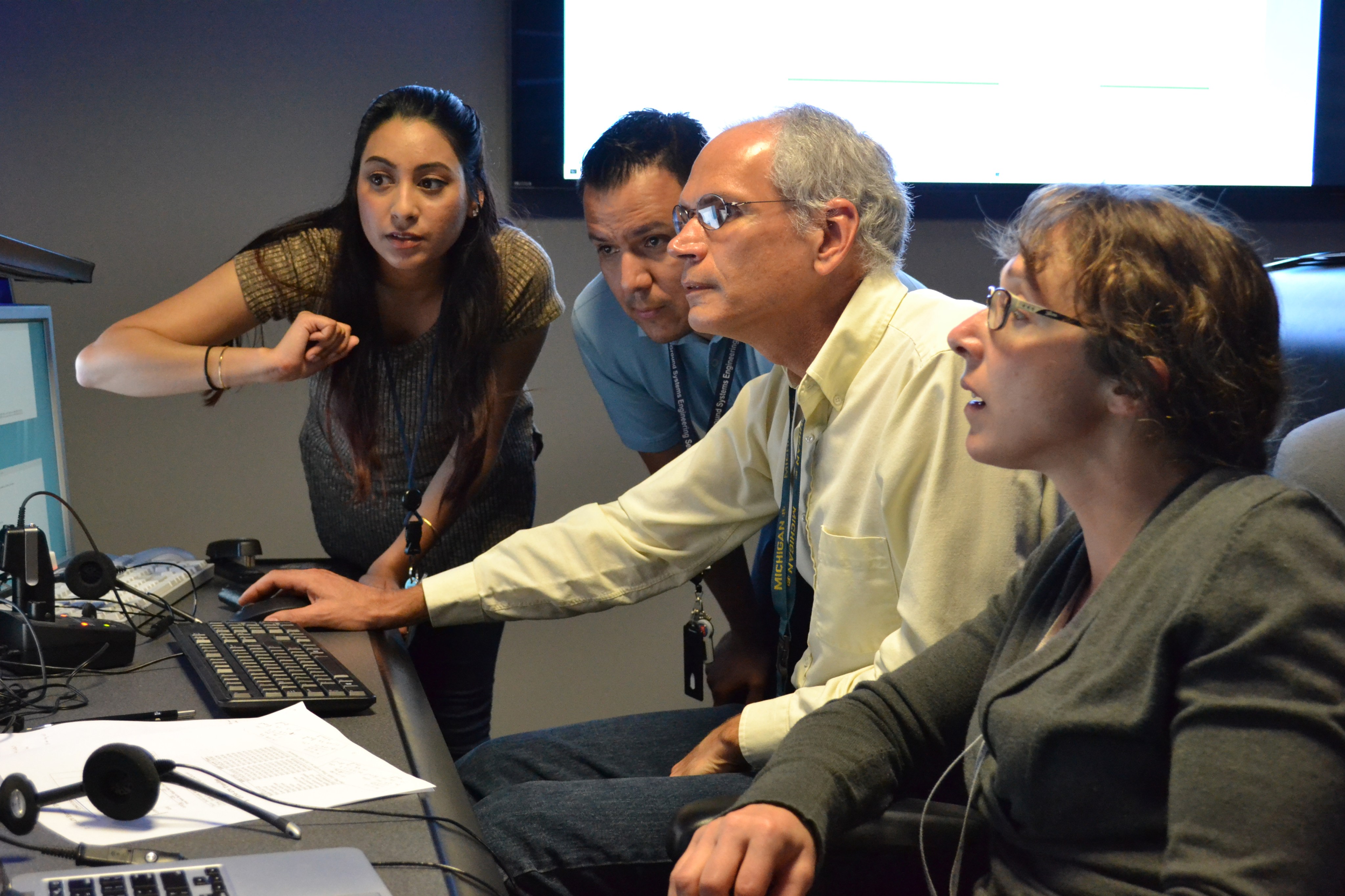Monitoring Cassini

| Credit | NASA/JPL-Caltech |
|---|---|
| Language |
|
Members of Cassini’s navigation team monitor the spacecraft’s radio signal on a display in the Spaceflight Operations Facility at NASA’s Jet Propulsion Laboratory. The spacecraft performed its 127th and final close flyby of Saturn’s moon Titan April 22. Cassini used the moon’s gravity to change the trajectory so that the spacecraft will now dive through the unexplored space between Saturn and its rings about once per week until the mission ends.
Cassini’s flight team usually performs a “cleanup maneuver” following Titan flybys — the spacecraft fires its thrusters to adjust the trajectory. Maneuver sizes may vary between a few millimeters per second to many meters per second.
Because of the Doppler effect, the frequency of the Cassini’s signal to Earth varies depending upon the spacecraft’s motion relative to Earth, so the navigation team uses Doppler shift of the spacecraft’s signal to calculate the spacecraft’s speed toward or away from Earth. In this case, the team is checking Cassini’s signal following a cleanup maneuver to see how closely it matches the expected shift.
Navigation team members determined that this maneuver performed as planned.

